© Bern Psychiatric Museum
Around 1920, the Rheinau nursing home in Zurich was one of the largest psychiatric institutions in Switzerland. Now, for the first time, historical photographs from other institutions provide insights into life “behind walls”. They are surprising and oppressive.
The man with the feather headdress looks confidently into the camera. A kind of raffia skirt and garters cover his nudity. The exotic-looking figure is a patient in the Waldau mental asylum. He poses in the door frame of a so-called Varek cell. That’s what the isolation cells used to be called. Varek is actually seaweed.
The isolation cells of the psychiatric institutions were filled with this material. The patients had to undress beforehand. The man pictured probably made his costume himself – to be able to endure the monotonous hours.
A guard with a tie and a snow-white, ironed apron is standing next to the patient. He is holding a square wrench in his hand. He seems to present the “savage” to the viewer boldly and proudly. Katrin Luchsinger reminds the situation of photos from earlier ethnological shows. The Zurich art historian has been researching the interaction between art and psychiatry around 1900 for many years.
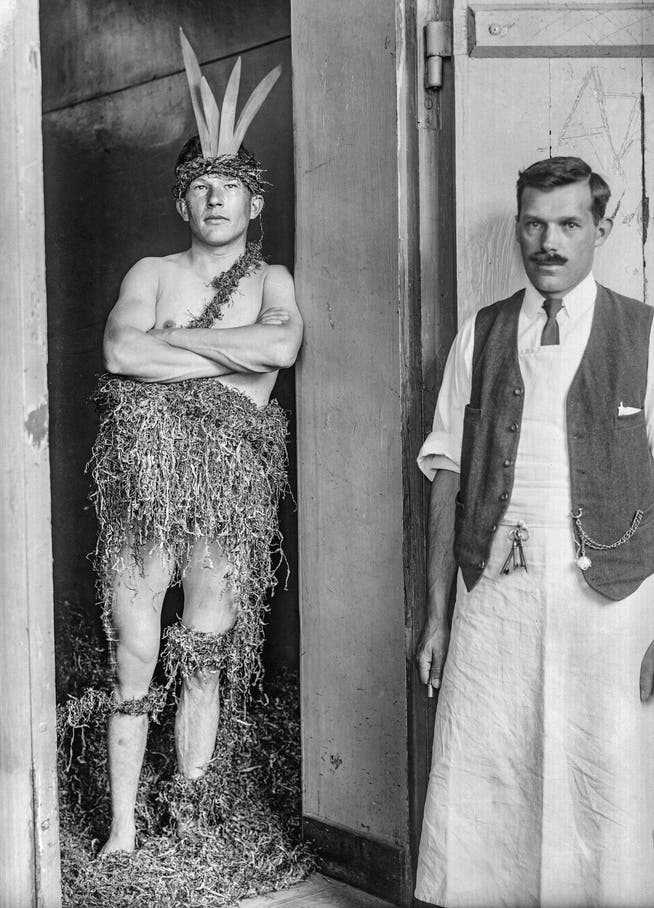
A patient in the open door of an isolation cell. Cantonal insane asylum in Waldau, Bern, photographer unknown, undated.
In-house advertising
Katrin Luchsinger initiated the book “Hinter Mauern” and the exhibition of the same name. She realized the project together with Stefanie Hoch, curator at the Kunstmuseum Thurgau. For the first time, the photo book that has just been published shows a selection of photos from ten psychiatric institutions in Switzerland that were taken between 1880 and 1935.
Some psychiatrists used the new medium to make diagnoses. Glass slides, photo prints and photo albums are therefore preserved in the clinic archives, which have not yet been examined. The slides were used by the psychiatrists in lectures to colleagues or to train nursing staff. Some of the illustrations can be found in psychiatric textbooks.
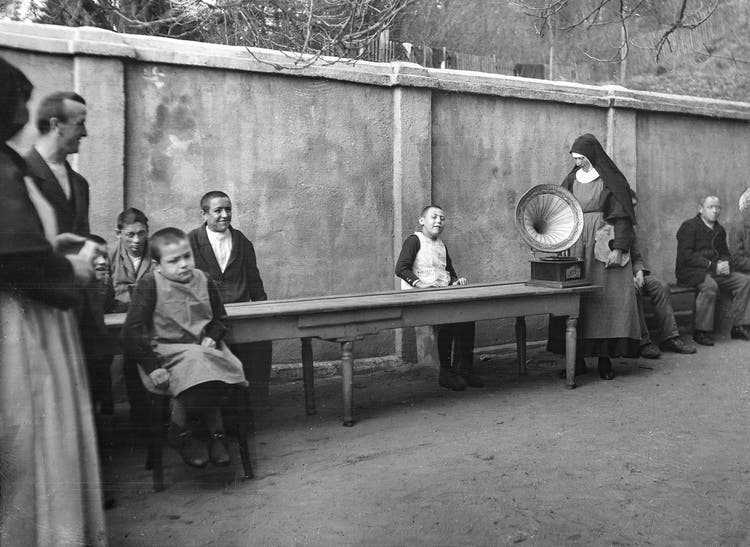
A nun plays music on a gramophone to a child. Presumably Marsens Sanatorium and Nursing Home, Freiburg, “Musikalischer Idiot”, photographer unknown, undated.
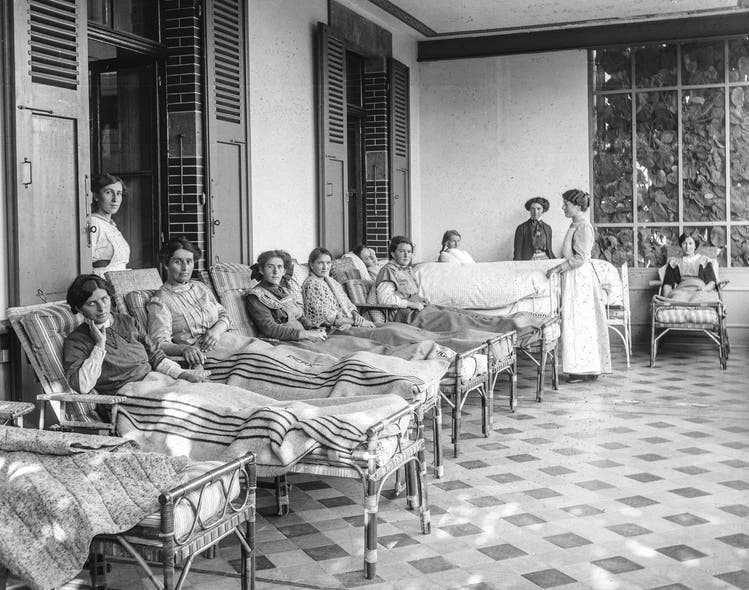
Patients in the air cure. Perreux nursing home, Neuchâtel, Office de Photographie Neuchâtel Attinger, undated.
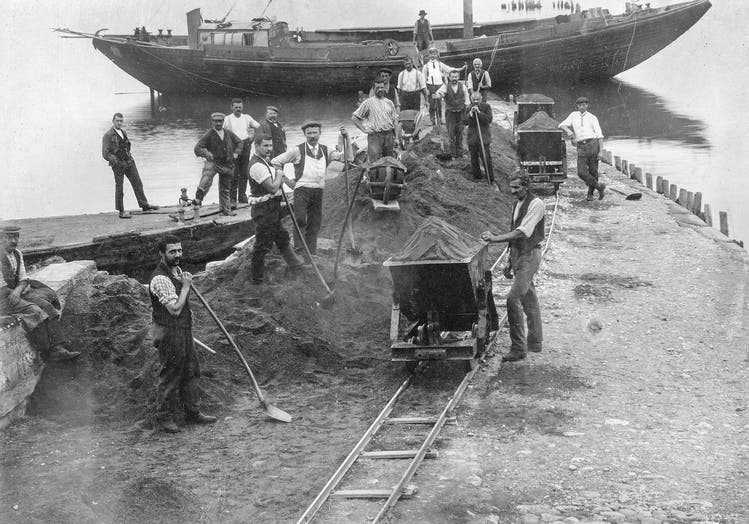
Filling goods wagons at Lake Constance. Münsterlingen sanatorium and nursing home, photographer Hermann Rorschach, around 1911.
Snapshots have also been preserved. They document the “normality” of prison life. This included modest alternations such as dance events, traveling circuses or theatrical performances. Hermann Rorschach stages this particularly beautifully in a private photo album. The psychiatrist, who worked in the Münsterlingen, Waldau and Herisau institutions, became famous with his inkblot test.
Photographs from the Rheinau nursing home in Zurich are also included in the photo book. With more than 1,000 patients, “the Rheinau” was one of the largest psychiatric institutions in Switzerland around 1920. The departments were separated by gender and divided into “quiet” and “restless” stations. Most of the patients lived within the walls of the former monastery on an island in the Rhine until they died.
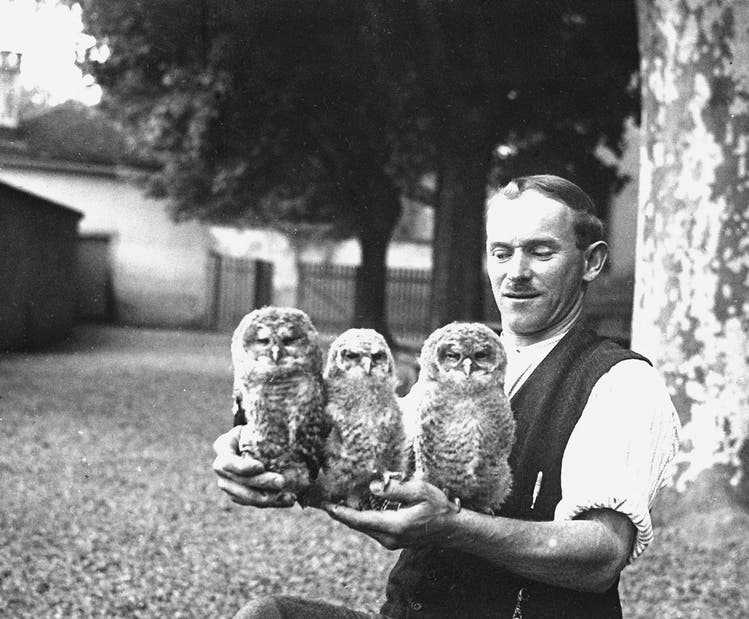
A patient or attendant presents three live buggers. Rheinau nursing home, photographer Friedrich Ris, around 1910.
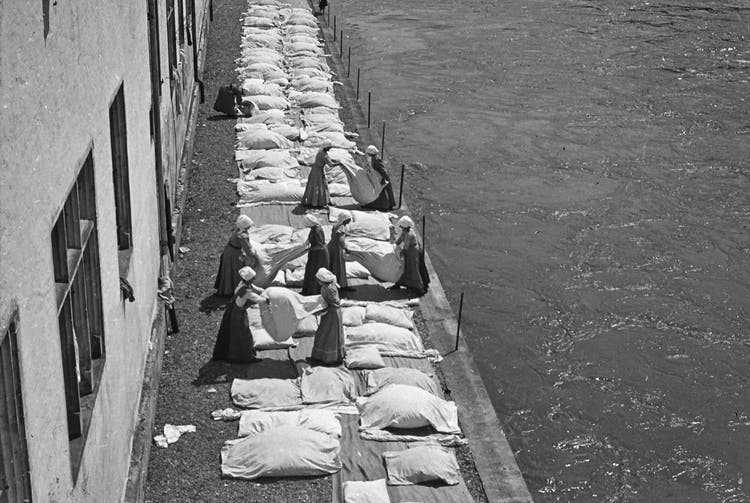
Sunbathing on the duvets on the banks of the Rhine. Rheinau nursing home, photographer Friedrich Ris, around 1910.
A large farm belonged to the institution. Self-sufficiency required patient cooperation. In the photographs of the later clinic director Karl Gehry, they can be seen raking in hay or harvesting. At that time, however, working patients were also a popular subject in other Swiss clinics, in order to show the public the modernizing treatment approaches.
The psychiatrist Eugen Bleuler, director of the Rheinau nursing home and the Burgholzli clinic in Zurich, brought “work therapy” into play. He saw it as a tried and tested means of directing the patients’ thinking in “orderly channels”. For Karl Gehry, artistic creation was part of it. But also the loosening and plucking of varek and horsehair, with which mattresses were filled.
In 1910, Gehry gave a memorable picture of patients in a “restless” ward: the feet of the working women sink into balls of horsehair. They are guarded by a guard. A large bunch of keys hangs on her belt.
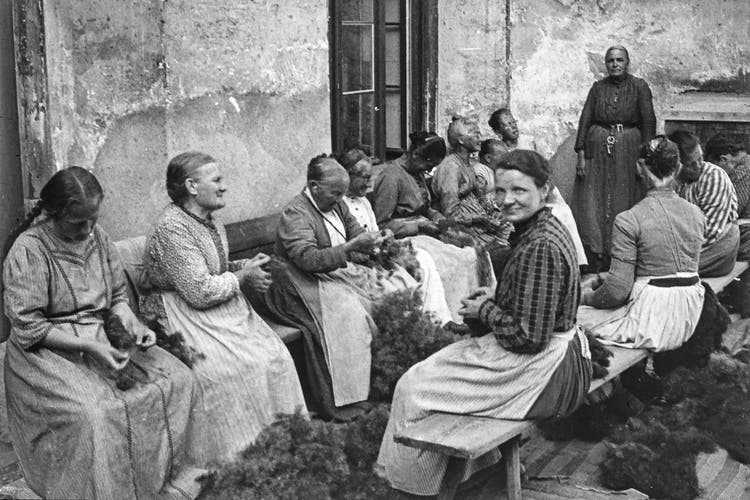
Patients plucking horsehair. Rheinau nursing home, photographer Karl Gehry, around 1910.
The clinic directors also used photography as a means of communication with the outside world. Their aim was to give the public a positive picture of life “behind walls” and to break down prejudices against psychiatry. For image promotion, the institutions commissioned professional studios to photograph clean and bright interiors.
Crowded departments with chaotic scenes are completely absent. Only one coercive measure found its way into the book: it shows a man in a lidded bath. Only his head sticks out of the water. This method was used to calm the patients down.
In the annual report of the Rheinau nursing home in 1896, Eugen Bleuler proves that life in the institutions was by no means always orderly or even cheerful: “How can a sick person be accustomed to peace and order when a whole or half a dozen fellow patients ringing in his ears, fighting, throwing food around?” he writes. And: “How can he be gentle and kind if he has to be constantly ready to defend himself against the abuse of others?”
Visualize the «madness»
It is to the great merit of this impressive photo volume with its enlightening texts that it carefully embeds the glossed-over omissions in the contemporary historical context. Also the portrait photography of the “mentally ill” used for medical purposes. From the middle of the 19th century, psychiatry began to visualize “madness”. It was an attempt to portray mental suffering as a physical illness. It was believed at the time that the trained eye could recognize a state of mind in photography.
Katrin Luchsinger found 40 portraits of patients in the inventory of the Waldau mental asylum, today’s Bern Psychiatry Museum, who had to pose in a recording situation that had been permanently installed for 28 years. The patients always sat in front of a dark wall. From the environment, at most, the corner of a chair back was revealed. The photographer stood very close to the person to be photographed, bent down to eye level and photographed their face frontally and illuminated. The caption gave the names and the diagnosis of those affected.
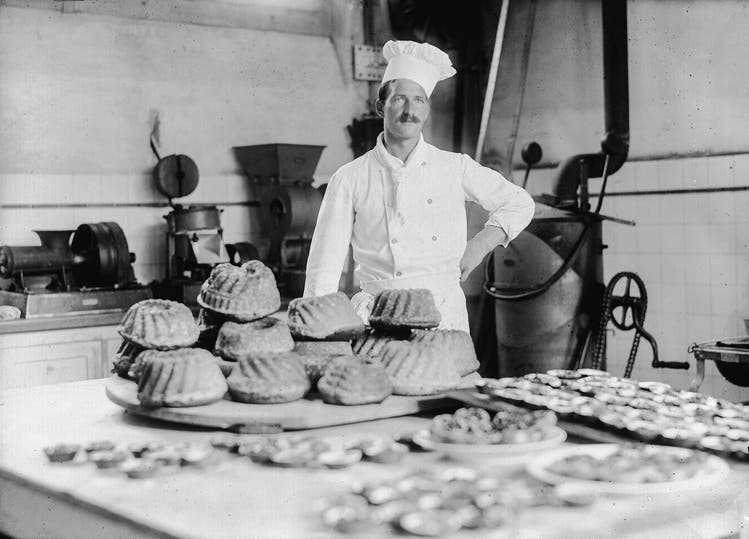
Institution baker with Bundt cake and tartlets. Waldau mental asylum, Bern, undated.
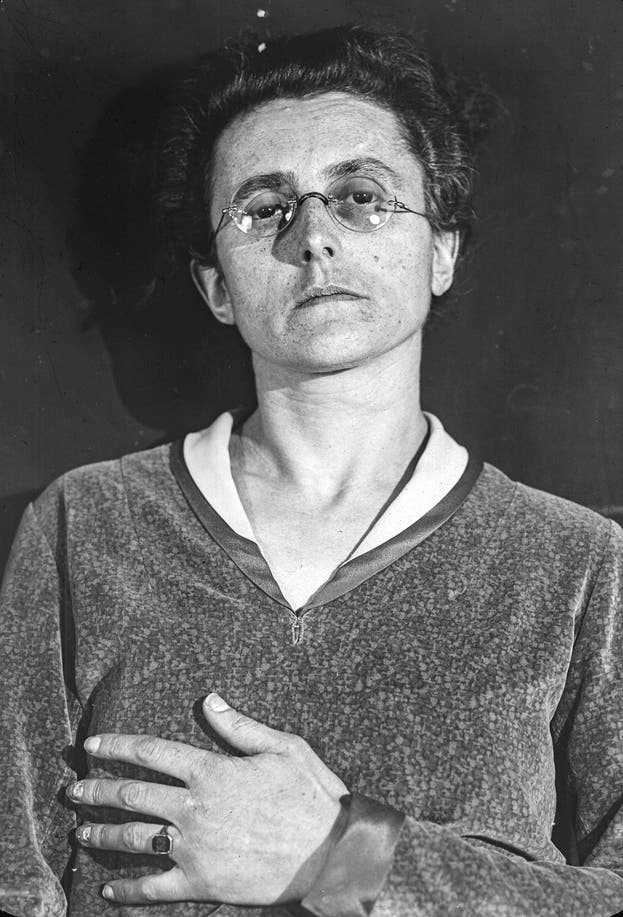
Portrait of a patient, Waldau mental asylum, around 1915.
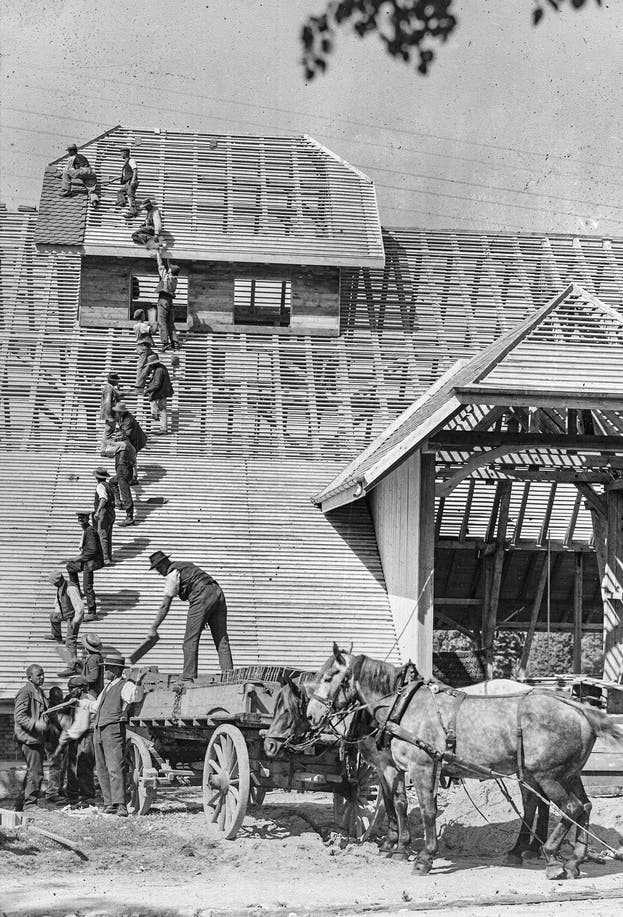
Patients as roofers, Waldau mental asylum, around 1921.
Left: Portrait of a patient, Waldau Insane Asylum, around 1915. Right: Patient as a roofer, Waldau Insane Asylum, around 1921.
It’s worth taking a look “behind walls”. Just because of Marie von Ries-Imchanitzky. The psychiatrist, always dressed in black, took pictures and put herself in the picture. Ries-Imchanitzky came from what is now Ukraine and studied in Bern because of the unrest in the Russian Tsarist Empire. In the Waldau Clinic, she looked after Adolf Wölfli, among others, until his death. It was only much later that his pictorial and poetic work became known to a wider audience.
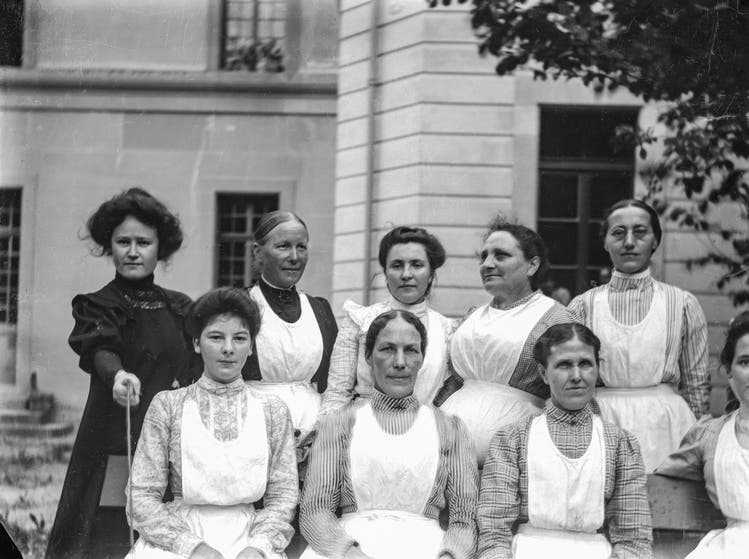
Doctor Marie von Ries-Imchanitzky (left) photographs a group of nurses with a self-timer. Waldau mental asylum, around 1920.
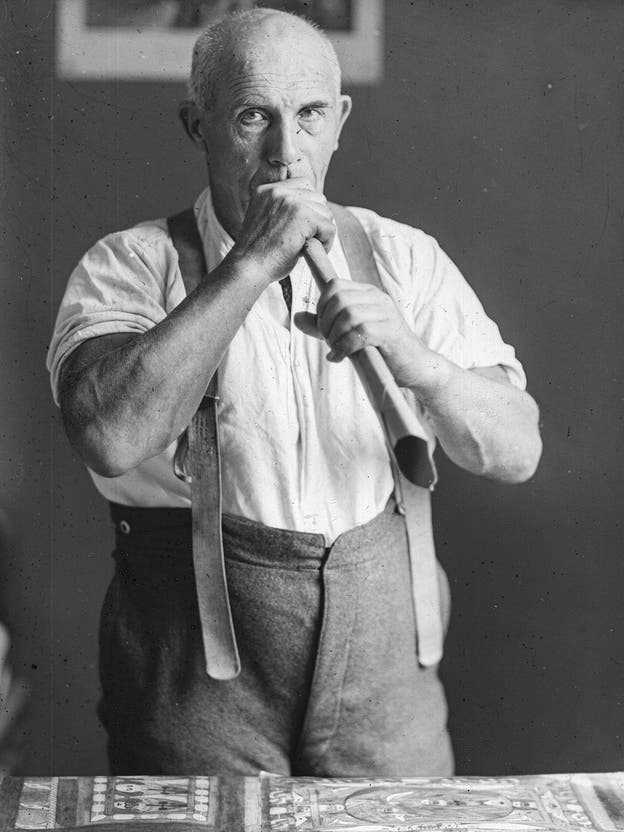
Adolf Wölfli with a paper trumpet. Waldau mental asylum, photographer probably Marie von Ries-Imchanitzky, around 1920.
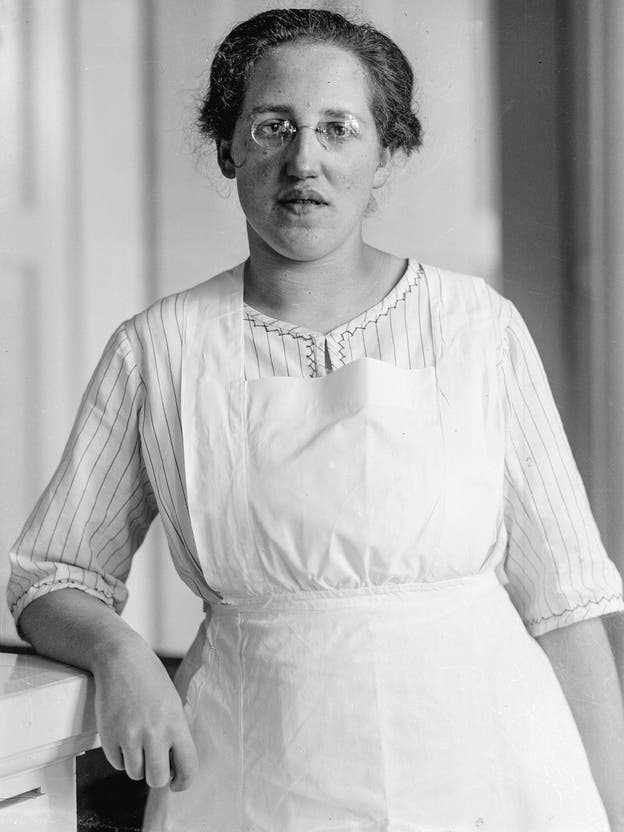
A nurse. Waldau mental asylum, photographer Marie von Ries-Imchanitzky, around 1920.
Left: Adolf Wölfli with a paper trumpet. Waldau mental asylum, probably photographed by Marie von Ries-Imchanitzky, around 1920. Right: a nurse. Waldau mental asylum, photographer Marie von Ries-Imchanitzky, around 1920.
The exhibition “Behind Walls” can currently be seen in Heidelberg and later in the Kunstmuseum Thurgau and in the Psychiatric Museum in Bern. In the canton of Zurich, the monastery island of Rheinau would be an ideal exhibition venue. The museum planned there is still on hold. After all, the government council has now promised that it will pass the project loan to the cantonal council in a few months.
behind walls. Photographs in psychiatric institutions from 1880 to 1935. Edited by Stefanie Hoch, Katrin Luchsinger, Kunstmuseum Thurgau. Verlag Scheidegger & Spiess, Zurich 2022. 130 pages, 66 b/w illustrations, 35 color illustrations, CHF 49.00.
Exhibition in the Prinzhorn Collection in Heidelberg until July 31, 2022, from October 2, 2022 in the Thurgau Art Museum (Warth), from May 26, 2023 in the Psychiatry Museum in Bern.
